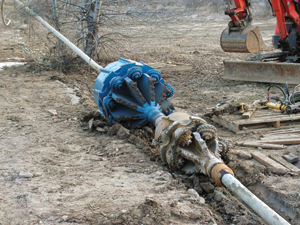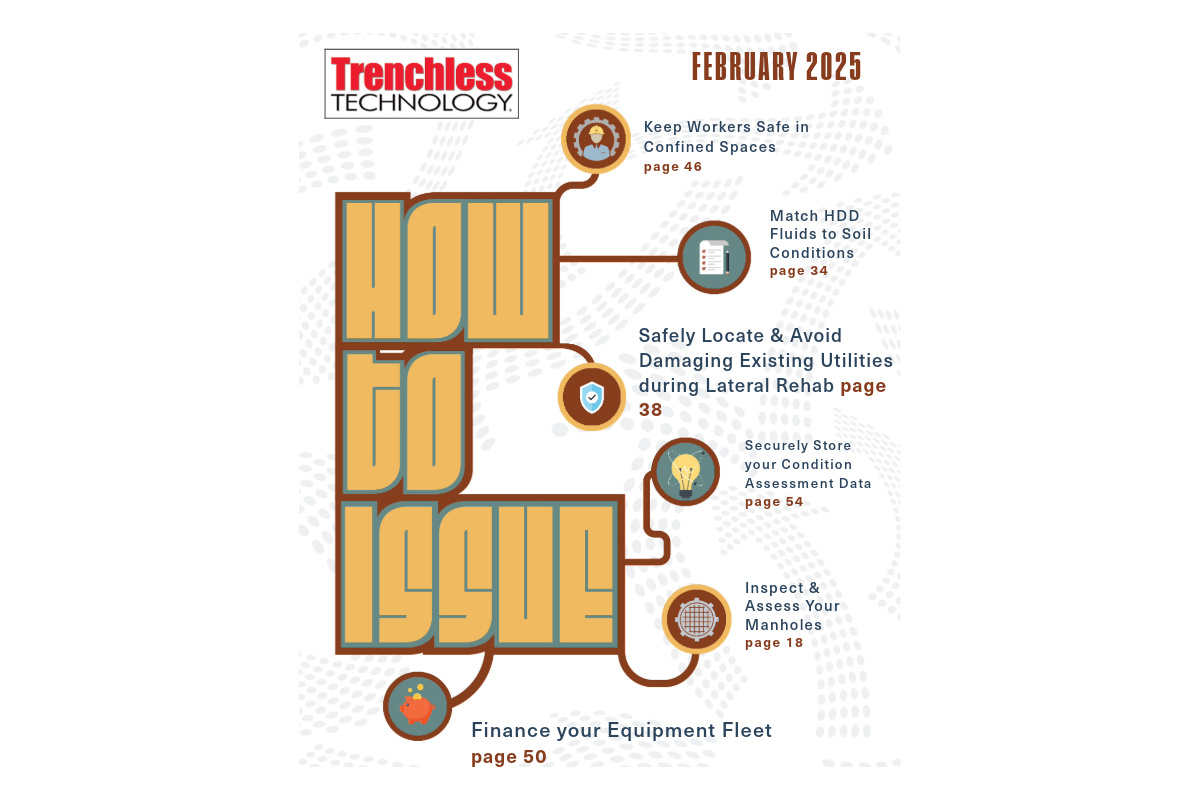Tool Selection
 When Brian Kenkel decided the time was right to start his own business, there were several underground drilling contractors already firmly established. Having been involved with horizontal directional drilling (HDD) for several years before he and two business partners founded Hurk Underground, based in Grinnell, Iowa, Kenkel was confident in his knowledge of HDD.
When Brian Kenkel decided the time was right to start his own business, there were several underground drilling contractors already firmly established. Having been involved with horizontal directional drilling (HDD) for several years before he and two business partners founded Hurk Underground, based in Grinnell, Iowa, Kenkel was confident in his knowledge of HDD.
But without an established reputation in a highly competitive arena, Kenkel felt the key to being successful was to find a niche — and fill it.
“We started out focusing on specialty work that other [HDD contractors] didn’t do,” Kenkel says, “like culvert cleaning, a lot of drainage work and those sorts of things. We also use some [HDD] methods that other contractors don’t, which gave us a leg up from the beginning. Initially we concentrated on the railroads and things just took off from there.”
After starting out with a truck, one drill and renting excavators for most projects, Hurk Underground has enjoyed steady growth ever since. The company now has seven full-time employees, three drills, three mini-excavators, nine trucks and several ASVs and has expanded its services to include pipe ramming. Kenkel attributes their early success to persistence, perseverance and what he coins as a bit of a stubborn streak.
“We just kept going door to door until someone said yes,” Kenkel says. “We called on state departments of transportation and railroads mostly, telling them what we could do and making presentations about our capabilities. It was really frustrating at first. During most of those early meetings, we got a lot of doubtful looks from folks who you could tell were skeptical that we could actually accomplish what we were describing. Then we finally got a couple of guys to give us a chance — more so I think because they just got tired of hearing from us and really didn’t think we could pull it off. After we delivered, all of a sudden, we had lots of work.”
Kenkel’s “stubborn streak” and niche services approach has certainly paid off. Hurk Underground now completes projects throughout the United States, recently completing a complicated and challenging job on a main line of Burlington Northern railroad track located near Pleasant Dale, Neb.
A continuous trickle of water flowing from a spring located within a nearby hillside kept a ditch that bunkered the track filled with water. This persistent moisture created soggy conditions year-round, resulting in slow orders and a continuous wet track. (Slow order is a term to describe when the condition of the track is compromised causing trains to reduce speed when passing over that portion of the line.) Burlington Northern called on Hurk Underground to rectify the problem with its patented wick boring technology.
The process involves putting corrugated drain pipe in the ground and literally “wicking” the water into a pipe to drain. It took Kenkel’s crew 73 shots at roughly 175 ft per shot into a carrier pipe that ran for more than a half mile in order to drain the continuous flow of spring-fed water. To complete the job, Kenkel selected tooling manufactured by Vermeer Corp., located in Pella, Iowa, in addition to a DCI Eclipse locator.
Kenkel ran the patented SplineLok tooling connection system developed by EarthTool Co. and distributed by Vermeer. “This project consisted of over 70 bores in wet, muddy conditions,” Kenkel explained. “Much of the time the reamer was submerged in water, making it even more difficult to get on and off. For safety reasons and just plain ease, the SplineLok system makes it easy to change tooling. Using the SplineLok system we never broke a connection. It’s a very clean connection as opposed to the traditional thread-lock.”
Tooling Purchasing Tips
When it comes to making tooling purchase decisions, Kenkel considers three main factors.
“Reliability is first and foremost,” Kenkel says, “Having tooling you can rely on is essential. To replace a broken tool is costly. In addition to the expense of having the tool repaired or replaced, there’s the obvious cost of having a drill shut down and not operational. And if the tool breaks in a spot where you can’t get it back out, it’s a huge headache — not to mention that you won’t be able to drill in that spot again. Many times we only get one shot at a bore.”
Tooling construction is also an important factor. Design and engineering, the manufacturing process and the quality of the raw materials are all important considerations.
“We also consider loyalty and flexibility,” Kenkel continues. “When we find someone who works well with us, understands our business and is accommodating, we are loyal to them as a supplier. We consider Vermeer more than just a supplier. There have been several occasions where we have gone to them and they would custom build a tool to meet certain specifications. I don’t remember a time where they haven’t been able to build something for us.”
Tool life is dependent on the quality of the materials that comprise it and the engineering used to manufacture it. Manufacturing processes vary a great deal. The quality of the carbide can also vary as can the quality of the raw materials used for other tooling components such as cutting teeth.
A tool is only as strong as the material it’s made from and the process used to build it. Design is also a major factor. Generally, the better the cast, the stronger the tool, and the better it’s engineered, the longer it will last.
Friction is the greatest contributor to wear so accuracy in positioning of the cutting teeth is critical. Even a minute space off in positioning can result in inefficient cutting and increased tool wear while accuracy in laying out the teeth greatly enhances the life of the tool.
According to Chris Fontana, who manages the Vermeer Cutting Edge segment, proper tool selection is key for successfully completing a bore. Fontana feels strongly that contractors should be diligent in thoroughly developing a plan before beginning any project. This includes knowing the terrain, ground conditions and an understanding of which tools work best in certain conditions.
“Some [soil] conditions are more forgiving than others,” Fontana explains. “But when you get into fairly specific and rugged terrain — hard packed clay, cobble, and certain types of rock for example — the right tool choice can spell the difference between success and failure. The more a contractor knows about what will be encountered, the better the odds of completing the bore successfully and in the most efficient way.
“Talk to as many people as possible who have experience with the soils and know the topography of the region,” Fontana says. “There are so many different tooling choices and experience plays a big role in the process. Different reamer styles are designed for specific conditions. Vermeer recommends that contractors complete a cost-benefit analysis before purchasing any tools so they aren’t buying a tool that is more than they need, or worse, tools that are unequipped to handle a job.”
Randy Happel is a technical writer, based in Des Moines, Iowa.
![]()


